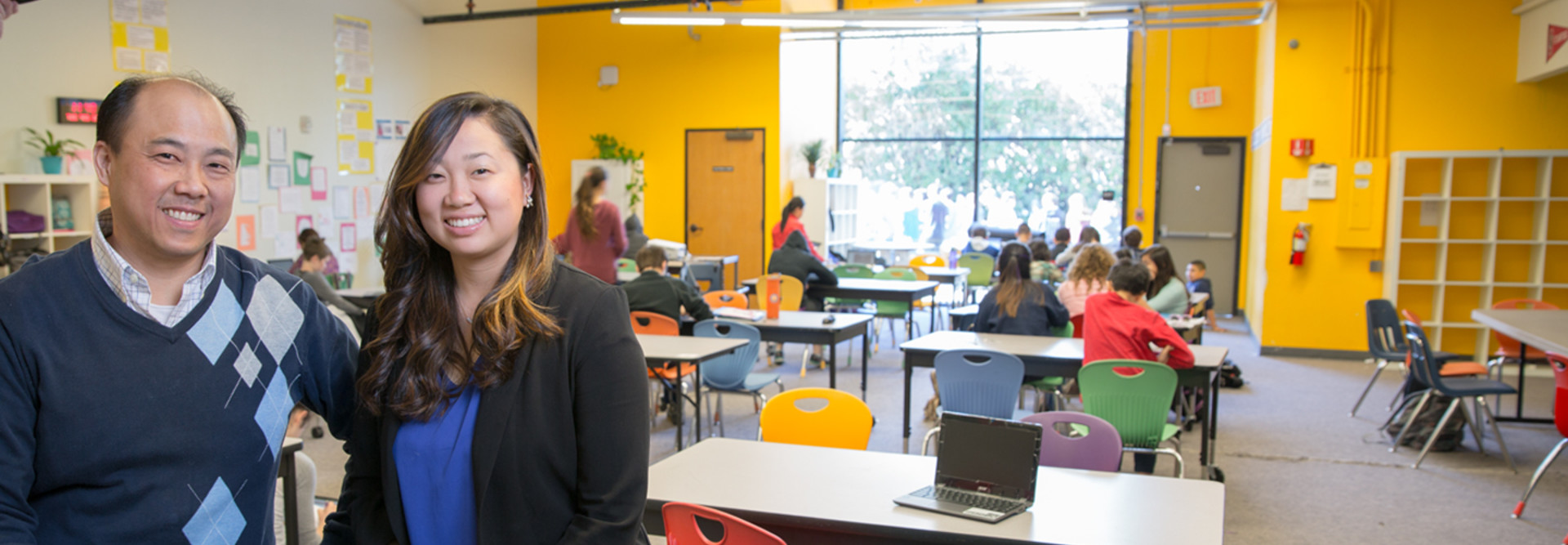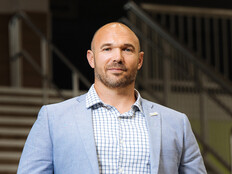Facebook Teams Up with California Charter Schools
In 2011, Summit Public Schools checked on its first graduating class and found 55 percent on track to graduate college within six years — twice the national average for schools with similar demographics.
Peers and community members celebrated, but Summit’s founder and CEO, Diane Tavenner, had the opposite reaction.
“She said, ‘We set out to prepare 100 percent of our students, and this is not 100 percent of our students,’” recalls Lizzie Choi, director of Summit Basecamp, a national program that supports schools interested in expanding or exploring personalized learning.
Based on feedback from graduates, Summit redesigned its entire model. “It sparked energy across the organization of ‘Let’s dream bigger,’ ” says Choi.
Those bigger dreams produced better outcomes at Summit, which has 10 (soon to be 11) secondary charter schools in California’s Bay Area and Seattle and Tacoma, Wash. Last spring, 99 percent of Summit’s graduates were accepted to four-year colleges.
That success has attracted thousands of educators, who visit Summit to get ideas for their schools. It also caught the attention of Facebook founder Mark Zuckerberg and his wife, Priscilla Chan, who have partnered with the charter management organization to create software supporting its educational model and share it with schools around the country for free.
At the core of that model is the concept of personalized learning. Each Summit student is assigned a mentor (teacher), who serves as a coach while the student sets long-term goals and creates a roadmap to achieve them. They use Summit’s teacher-developed Personalized Learning Plan (PLP) to record those goals and schedule activities, access educational resources, assess their skills and track their progress toward those goals.
The PLP platform, created by an engineer at Summit in spring 2013, was originally a static Excel tool. After visiting Summit that fall, Zuckerberg assembled a small team of Facebook engineers to help transform the PLP into a dynamic online tool that can be adapted by schools of all sizes and types.
Last fall, through Summit’s Basecamp program, 19 public schools around the country began using the PLP. Those schools provide feedback on their experiences with the tool so that Facebook and Summit can continue to improve it. Ultimately, they would like to offer the tool free to any U.S. school that wants it.
“Through our partnership with Summit Public Schools, we have this amazing opportunity to empower teachers and help them do what they do best by doing what we do best — building software,” says Adam Seldow, head of education partnerships at Facebook. “One thing that makes it work well is that the visions align; the leadership on both sides fundamentally believe in personalized learning.”
The team from Facebook operates independently — the PLP is completely separate from Facebook and doesn’t require an account.
“It’s a level of expertise that has been incredible to have,” says Mira Browne, chief external officer at Summit Public Schools. In turn, the PLP, support and resources that Summit provides to its Basecamp partner schools are free. “We want no barriers for schools that want to do this.”
Building the Engine Behind PLP
From its first public charter school in 2003, Summit Public Schools was built on the idea of high expectations and high support for its diverse student body (44 percent of its 2,500 students are Hispanic). Summit is an intentionally diverse model, serving a mixed-race, mixed-income student population. Every student takes at least six Advanced Placement courses.
Another core principle is personalized learning. Instead of listening to teachers lecture, students have time each day to learn at their own pace, choosing the topics and lessons that fit with their learning goals..
One student might be reading while another works one-on-one with a teacher. Across the room, a group might discuss ideas for a project designing products that prevent heat exhaustion in athletes.
Each day, students log in to the PLP with Chromebooks and see their roadmaps with all of the projects they’re working on and “playlists” of resources and activities. They take tests through the PLP whenever they feel they’ve mastered the content. The color-coded PLP dashboard helps students and teachers visualize progress toward goals — completed items turn from blue to green, while content they haven’t mastered turns red.
The PLP, which includes a grade 6–12 curriculum, can help free classroom time so teachers can mentor students and facilitate deeper learning experiences in which students work in teams and solve authentic problems related to the real world, points out Seldow.
“A lot of what happens in schools today is, quite frankly, adult-centered,” says Browne. “The framework of the PLP is about empowering students in the classroom and having it be from their point of view.”
Because the PLP is the backbone of the student and faculty experience, the schools’ technology infrastructure must be robust enough to support it, explains Summit Chief Technology Officer Bryant Wong. Summit schools have a one-to-one Acer Chromebook program and a fiber-optic network built with Ruckus Wireless products.
“Every component of technology is thoughtfully designed to work both in synchronicity and in harmony with the needs of our students and their goals and academic achievement,” says Wong. “Our students push the limits of our wireless every day. They are consistently accessing their PLP tool, Gmail, multiple videos and online learning resources and much, much more.
“If we are asking teachers and students to adopt more technology in the classroom, then we need to ensure hurdles, including the Internet, are not obstacles to learning,” he says.








